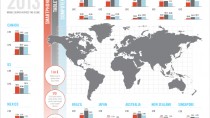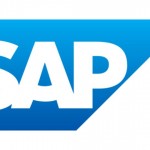次なるRTB取引形態!?「Programmatic Reserve」という考え方について~AppNexusより~(英文)
Today’s column is by Andy Atherton SVP, Strategic Accounts at AppNexus. It’s the first in a series on the emergence of programmatic reserve.
There has been no shortage of attention paid to programmatic reserve of late. The meme of “programmatic” as opposed to “RTB” has dominated the discourse for the past several months. I expect the trend to continue at the IAB Annual Leadership Meeting later this month in Phoenix and onward from there. 2013 appears to be shaping up as the year of programmatic reserve (and the year of mobile, of course!).
Programmatic reserve is a topic near and dear to me, so all this attention is exciting. However, in much of the dialog there appears to be an embedded assumption that programmatic reserve will be a simple extension of RTB. I disagree. It’s much more likely a successful approach to programmatic reserve will involve different technology and different players, solving different problems. So before we get too far ahead of ourselves, it’s worth taking a moment to carefully define this new opportunity — how it’s different than what has come before, why it’s important, and what success in programmatic reserve looks like. Let’s start with a quick level set on RTB.
RTB is a disruptive technology, with positive and negative impacts
RTB is a disruptive technology that has changed the digital media market in fundamental ways. It has dramatically improved the operational efficiency of scaling a buy across a large number of publishers, while allowing publishers easily to make their unsold inventory available to a large number of buyers. RTB has also facilitated a shift toward buying primarily based on user data, particularly buy-side user data, rather than context. Indeed, Google appears to define the market based on this characteristic alone. This shift has allowed advertisers and agencies (primarily through their trading desk units) to maximize impact of certain budgets by more tightly focusing buys on certain particular users. These advantages have driven rapid growth in the RTB market. In the US, more than 15% of digital display budgets (more than $2B) were spent via RTB in 2012, according to an October 2012 estimate from IDC. That’s up from approximately $0 in 2008.
However, like other disruptive technologies, RTB has also had negative impact on many incumbents in the digital media market, specifically on large differentiated publishers (I won’t call them “premium”). By allowing buyers to efficiently scale buys primarily around buy-side data, RTB has reduced the perceived value of context and positive brand association. Simultaneously, the operational efficiency advantage of RTB vs. direct sales has eroded the relationship between buyer and seller that is the foundation of the direct sales model. The combination of these factors makes it much more difficult for truly differentiated sellers to convey their value proposition to the buy side. As a result, many top-quality publishers are seeing significant pressure on their direct sales channels.
RTB has also created some challenges for the buy-side. An automated, high-volume marketplace can make it more difficult to identify quality inventory and/or prevent fraud, objectionable content, etc. RTB markets are getting pretty good at routing out fraud, but efficiently transacting differentiated inventory is still a challenge. Trading desks understand that certain sellers have higher quality inventory than others and are willing to pay a premium for that quality. However, the mechanisms to allow this (e.g., Deal ID) are inefficient and are still fundamentally RTB-based; they aren’t well-targeted to the buyers who value quality most, i.e. the very people upon whom the direct sellers used to call.
Programmatic reserve is not RTB. It’s a different market, with different requirements
RTB will continue to grow rapidly for years, accounting for almost twice its current share of display budgets in 2016, approaching 30% or some $9B in spend, by IDC’s measure. This is a huge opportunity, make no mistake. But even several years from now, the lion’s share of digital display money won’t be spent via RTB. So, we’re missing another huge opportunity if we continue to view the market strictly through that lens. We should be thinking bigger. We should be going after the whole enchilada.
As Yogi Berra once said, “If you don’t know where you’re going, you might not get there.” In order to go after the new, non-RTB programmatic market, we need to keep in mind that this money is spent very differently and is geared towards different objectives. Most non-RTB budgets are spent on a guaranteed basis, pre-planned and aligned with other media, generally to drive upper-funnel metrics that aren’t immediately available online. We also need to keep in mind that as the numbers get bigger and digital spend as a fraction of the whole marketing budget gets more significant, expectations will change; delivery volatility or quality concerns that may be acceptable for 5% of a budget would be much less acceptable for 25% of a budget.
The operational process for this non-RTB spend is widely-acknowledged as a disaster. It’s a highly manual, repetitive thicket of some 40 to 60 steps, depending on whose process flow diagram you’re using. The process is so inefficient that combined buy-and sell-side overhead can total $100K per campaign. But for all the inefficiency, it does allow (mostly brand) advertisers to predictably deliver their message in high-quality, appropriately targeted environments. So this is the problem we need to solve on the buy side: How do we improve the efficiency and results of this process, while still addressing the important business requirements? Trying to push this spend into today’s RTB-based solutions because these are already more operationally efficient isn’t going to work. This isn’t a tear down, it’s a remodel.
Meredith Levien, CRO/Group Publisher of Forbes Media, gave a great talk at Digiday Exchange Summit Miami that presented the challenge well from the sell-side. She said Forbes’ media revenue was split 45% premium, integrated programs, 45% transactional RFPs, and 10% RTB. I believe this rough split is typical for top quality publishers today. Recognizing that her sales team isn’t in a position to add a great deal of value to this transactional 45%, Meredith’s goal is to move the breakdown over time towards 50/50 premium/programmatic programs, while maintaining yield. I think that’s a great stake in the ground, and wouldn’t be surprised if her counterparts across the landscape of top quality pubs had similar objectives.
Success in programmatic reserve
In this context, I submit that “success” in programmatic reserve will be achieved when the operational efficiency of that 45% of the business that is transactional RFPs today is similar to the operational efficiency of RTB, without reducing net monetization. Rates may decline somewhat, but those declines should be more than offset by gains in sell-side operational efficiency. The buy-side will benefit from any rate declines, but more importantly will see similar (huge) efficiency gains.
Of course, one possible path to this outcome is for RTB to grow from 10% of sales to 50+% of sales for Forbes and other top quality publishers. But as I have outlined, I think anyone who’s waiting for that had better not hold his breath. The users, business objectives and operational processes for this new programmatic frontier are just too different.
It’s tempting to tell ourselves that non-programmatic processes persist simply due to inertia or lack of sophistication, but that’s a trap. Innovation that is founded in a deep understanding of non-programmatic processes and the business requirements behind them will be the fastest way to move forward.
from:
http://www.adexchanger.com/data-driven-thinking/programmatic-reserve-lets-solve-the-right-problem/












